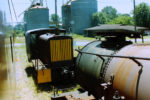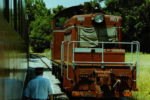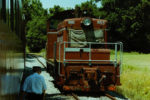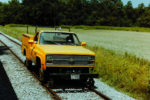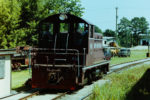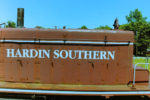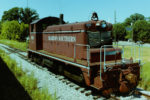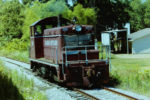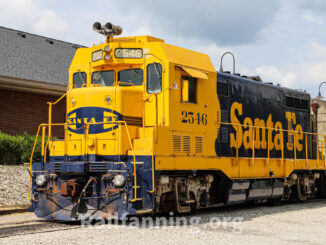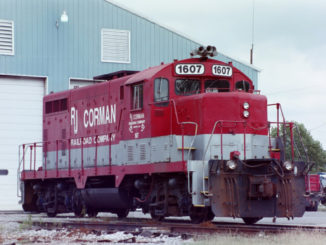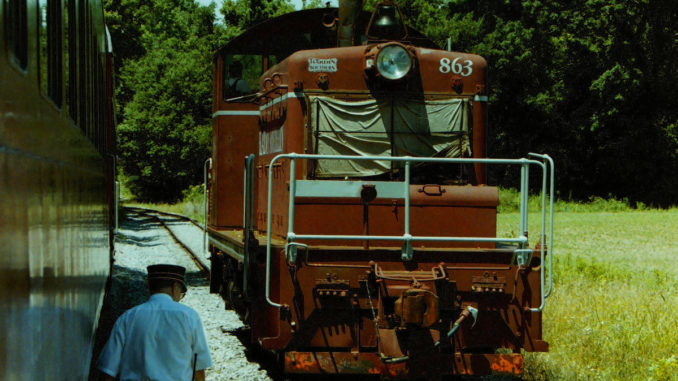
HARDIN, Ky. — A small town grew up around the Paducah, Tennessee and Alabama Railroad as it was built through the area circa 1890.
A small depot was built on land purchased from local landowner Hardin Davenport Irvan. He moved his store from Wadesboro to a site along the new rail line and lent his name to the community that developed in the area.
While a post office was established on Oct. 31, 1891, it wasn’t until March 25, 1952, that Hardin was officially incorporated.
Paducah, Tennessee and Alabama Railroad History
The Paducah, Tennessee and Alabama Railroad, chartered on July 1, 1889, started construction of a line between Paducah, Ky., and Lexington, Tenn. The 118.61-mile-line line was completed in October or November 1892; it was declared bankrupt on Oct. 18, 1895.
The Louisville & Nashville purchased the line at auction on Dec. 14, 1895, and leased it in September 1896 to the Nashville, Chattanooga & St. Louis Railway for 99 years. The Nashville, Chattanooga & St. Louis and the Louisville & Nashville eventually merged in 1957.
The last passenger train operated over the line in 1951.
Seaboard halted services on the line and abandoned a 30-mile section of track between Paducah and Hardin in 1983, according to an archived version of the railroad’s website from 1997.
On June 24, 1983, J&J Railroad incorporated and acquired and an 8.34-mile-long portion of the line from the Seaboard System, an L&N successor, according to the “American Shortline Railway Guide.” The short line railroad began service on Oct. 11, 1983.
J&J Railroad interchanged with the KWT Railroad in Murray, Ky.
The Hardin Southern is formed
The Hardin Southern Railroad was officially incorporated with the state of Kentucky on May 10, 1993, with its stated purpose “to operate a railroad,” according to state records.
The Hardin Southern acquired the assets of the J&J Railroad on Oct. 1, 1993.
The heritage trains began rolling over the route during the weekend of July 4, 1994, according to an archived version of the Hardin Southern website. The following year, the Commonwealth Heritage Council declared the railroad a Kentucky State Landmark.
Severe flooding damaged a mile of the railroad’s track on March 1, 1997. However, the track was repaired, and the 1997 excursion season began on schedule on May 24, 1997.
The railroad operated the heritage trains through the 2003 season. The all-volunteer Mid-South Rail Heritage Foundation operated passenger service for a season in 2004.
End of the line
In 2005, the Murray-Calloway County Economic Development Corporation petitioned the Surface Transportation Board (STB) to purchase the line. Their mission was to preserve it for “future use and continuing freight services at the Murray Industrial Park,” according to a notice on the Hardin Southern’s website.
Also in 2005, KWT leased about a mile of the line in Murray to service an industrial park there.
Trey Grayson, then Kentucky Secretary of State, dissolved the company on Nov. 1, 2005. KWT Railroad apparently operated contract rail services over the line after 2005.
By September 2006, the Murray-Calloway County Economic Development Corporation was maintaining the tracks “until clients can be found to justify operating the track,” according to a report in the Murray Ledger & Times. By December 2006, the group secured $250,000 in loans from the Delta Regional Authority to help purchase and rehab the line.
On April 22, 2009, Murray-Calloway County Economic Development Corporation filed a notice with the STB to abandon a 7.34-mile-long section of the line, saying no traffic has moved over the line for at least two years.
The petition was ultimately granted, and tracks were removed around August 2009.
Roster
The railroad used a vintage Sw1 as its primary motive power. Here is a brief look at the railroad’s roster:
- No. 863: Electro-Motive Corporation (EMD) built this SW1 in 1940 (serial No. 1048). It originally served on the Milwaukee Road as No. 1622 then No. 952. It was then retired and sold to Chrome Crankshaft. The J&J Railroad acquired the locomotive from in 1983 after it was retired and operated it as No. 1. The engine was at one point said to be the “oldest of its type still in regular active railroad service in America.” After its run in Hardin, it went to the Knoxville & Holston River Railroad in Knoxville, Tenn.
- No. 531: The Pullman Standard Co. built this coach in 1949 for the Norfolk & Western. Norfolk Southern used the car for its steam excursion service. Hardin Southern acquired the coach in May 1996.
- No. 533: The Budd Co. built this coach in 1946 for the Louisville & Nashville, which operated it as No. 3203. It later served on the Pittsburgh & Lake Erie Railroad as No. 401, then as No. 712 for the Fort Worth Railroad Historical Society.
- No. 532 (Lawton Park): Built for the Chesapeake & Ohio, the Fort Worth Railroad Historical Society later operated it as No. 714.
- No. 904133: Fruit Growers Express built this 12-seat C27A bay window caboose for the Chesapeake & Ohio Railway in 1980. It is apparently one of only 66 such cars built. Hardin Southern acquired the caboose from CSX in 1996. After the Hardin Southern ceased operations, the caboose went to the Tennessee Valley Railroad Museum in Chattanooga, Tenn., then the Black River & Western Railroad in Ringoes, N.J.
- No. 4: Baldwin Locomotive Works built this 2-6-2 Prairie type steam engine in 1914 (serial No. 41652). It was built to haul logs for the Burton-Swartz Cypress Co. in Florida. A collector later acquired the engine and stored it in Monee, Ill. Hardin Southern acquired the steam engine in July 1998. The Wanamaker Kempton & Southern in Kempton, Pa., purchased the locomotive in 2008.
- No. 1 or No. 7707: Davenport Locomotive Works built this 20-ton switcher (serial No. 2360) for the U.S. Army in 1941. The Lion Oil Co., the A. B. Cook Lumber Co. and the Malvern Brick and Tile Co. later employed the locomotive’s services. The Dardanelle and Russellville Railway later purchased the engine. The Mid-South Rail Heritage Foundation purchased the engine in 2002 and moved it to Hardin.
Sources
- Lessley, Donald E. (1994). Paducah Gateway. Image Graphics.
- Klein, Maury. (2003). History of the Louisville & Nashville Railroad. The University of Kentucky Press: Lexington, Kentucky.
- Lewis, Edward A. (1996). American Shortline Railway Guide. Kalmbach Publishing Co.: Waukesha, Wisconsin.
- HSRR.com (website archives accessed via archive.org)
- STB.gov


